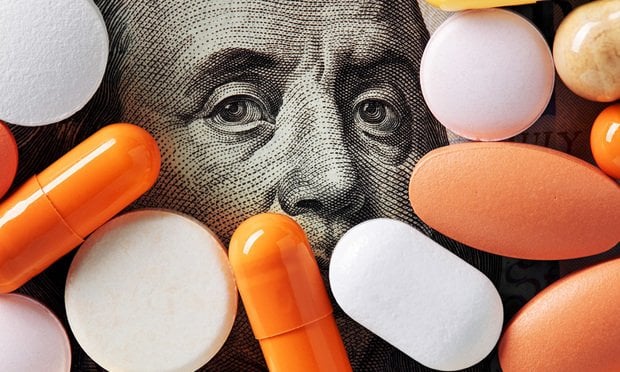The rise in overall spending within the U.S. health care sector has been muted, due mainly to hospitals trying to control increasing costs – including shifting delivery of care from inpatient to outpatient settings, according to Altarum's latest Health Sector Economic Indicators Briefs.
National health spending in September rose to $3.53 trillion, up 4.3 percent from a year earlier, hampered primarily by slow spending by hospitals, which rose just 1.9 percent. The hospital spending growth rate is the lowest since September 2011, when it was 1.8 percent.
However, year-over-year spending in all other major heath sector categories rose faster, with spending on dental services growing the fastest, at 6 percent. Health spending as a percent of the U.S. gross domestic product is estimated at 18 percent for September, equal to the August rate.
Recommended For You
"As we move into the fourth quarter of 2017, we are on track for about 4.5 percent growth in health spending for the full year," says Charles Roehrig, founding director of Altarum's Center for Sustainable Health Spending.
Despite the modest growth, "it has improved considerably when compared to GDP growth, which averaged 2.8 percent in 2016 and jumped to 4 percent for 2017 to date," said Roehrig. "Toward the end of this month, look for our November Trend Report which will include revisions to third quarter growth based upon the Advance QSS data release scheduled for November 17."
Health care price growth approached a historic low in September. Altarum's Health Care Price Index rose by 1.1 percent in September compared to a year earlier, its lowest growth since the all-time low of 0.9 percent in December 2015. The slowing is largely impacted by health policy uncertainty and structural health sector changes, according to the Ann Arbor, Mich. nonprofit research center.
While the annual price growth for other professional services, at 2.3 percent, was the fastest growing category, the price growth for prescription drugs plummeted to 1.4 percent, from 2.7 percent in August.
Health care job growth also remained modest, with 21,500 new jobs added in October 2017, less than the 2017 monthly average of 25,000. Year-over-year health jobs growth began 2017 at 2.4 percent, and this month dropped below 2 percent for the first time since 2014.
The health care share of total employment remains at 10.77 percent, an all-time high. Most of the slowdown is in hospitals, which are predicted to add about half as many jobs this year as in the previous two years — averaging 5,000 new jobs per month versus 10,000 to 11,000 new jobs per month.
© 2025 ALM Global, LLC, All Rights Reserved. Request academic re-use from www.copyright.com. All other uses, submit a request to [email protected]. For more information visit Asset & Logo Licensing.








